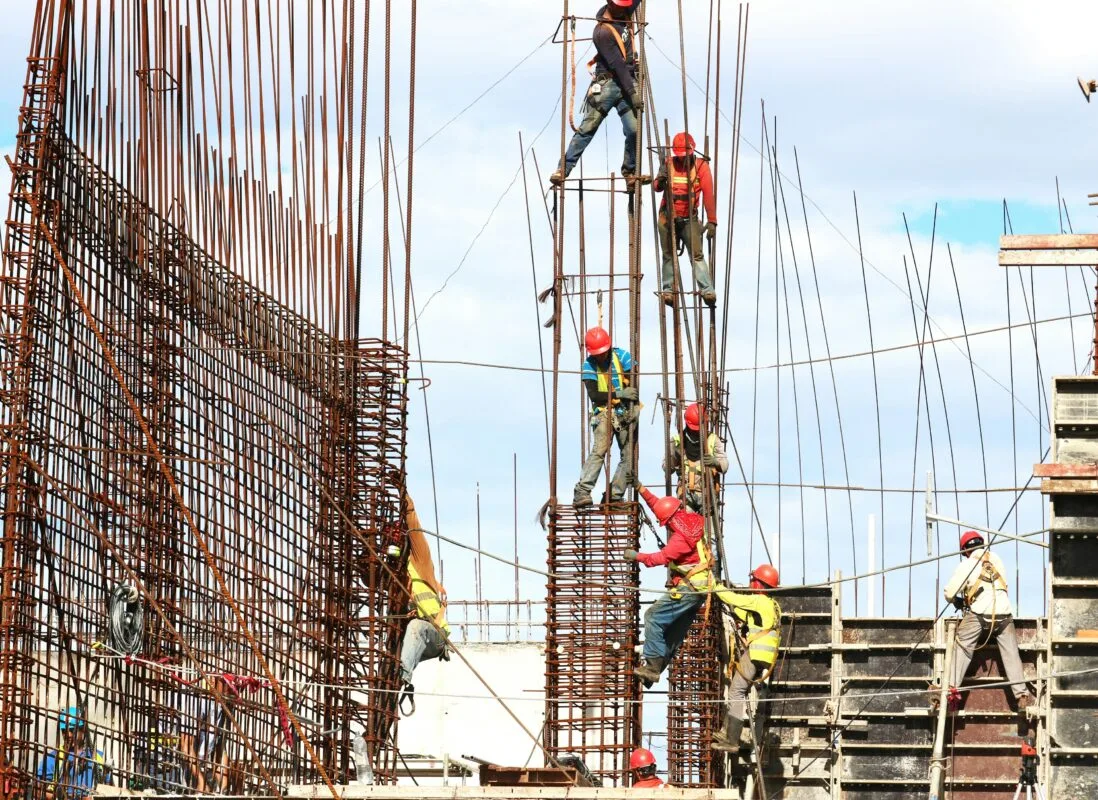In construction, surprises are almost inevitable—from weather delays to sudden cost increases in materials. This is where construction contingency comes into play.
A construction contingency is essentially a financial buffer set aside to cover unforeseen expenses that may arise. It can make all the difference between a project that runs smoothly and one that spirals over budget and off-schedule.
So when the unexpected happens, a construction project contingency helps projects stay on track without compromising quality, deadlines, and more importantly, your margins. It’s about fostering a prepared approach to construction management, where every potential hiccup is accounted for.
In this guide, we’ll break down everything you need to know about construction project contingency. What is it, why it’s important, and how you can calculate and use it to keep your projects in line.
What is construction contingency?
A construction contingency is a reserve of funds set aside to cover unexpected costs that can arise during a construction project. It’s like having an emergency fund for your project—making sure that unforeseen issues, such as delays, changes in scope, or rising material costs, don’t derail your timeline or budget.
This financial buffer functions as a safeguard, letting you adapt to challenges without compromising the overall quality or schedule. Without a proper contingency plan, construction projects are much more vulnerable to financial strain, which can lead to delays, disputes, and even construction legal risks.
Types of construction project contingency
There are different types of contingencies in construction, each serving a unique purpose and being accessed by different stakeholders. The two most common types—contractor contingency and owner contingency.
Contractor contingency. This type of contingency is set aside by the contractor to cover unexpected costs that fall under their responsibility. These could include unforeseen site conditions, minor design errors, or inefficiencies in the construction process. Having a contractor contingency ensures any flexibility needed to address challenges without compromising your ability to deliver quality work.
Owner contingency. This contingency is allocated by the project owner to cover changes in the project scope or additional work that wasn’t included in the original contract. This type of contingency is especially important when the project owner wants to make design changes or additions after construction has already begun so the project can accommodate changes without causing financial strain.
Different stakeholders (subcontractors, contractors, and project owners) may rely on various types of contingencies for smooth construction contracts. E.g., subcontractors often benefit from contractor contingency funds when unexpected site conditions require additional labor or materials. Meanwhile, project owners use owner contingencies to manage changes that enhance a project’s final outcome.
Let’s consider a scenario for a minute where a project owner decides to upgrade the materials for a specific part of an X building. The owner contingency can cover these costs, and the upgrade(s) won’t disrupt the budget or timeline. On the other hand, if unexpected soil conditions are hypothetically discovered during excavation, the contractor contingency may be used to cover the additional work.
Examples of construction project contingency in action
Construction contingencies have proven essential in numerous real-world scenarios.
Design changes. When a design change is requested by the project owner. Imagine an owner who wants to modify the layout of a particular section to accommodate new requirements. In this case, an owner contingency is used to fund these changes to keep the project’s budget and timeline intact.
Material price increases. Consider a situation where material prices unexpectedly increase midway through a project. Without a proper construction project contingency, these rising costs could strain the budget, leading to compromises in other areas of the project. But, with a well-planned contingency, you can cover the additional expenses without affecting the quality or progress of the project.
Keeping proper contingency. These examples highlight why maintaining proper contingency matters to keep projects within budget and on schedule. Without it, even minor changes or unexpected conditions could derail the construction process, resulting in delays and quality compromises.
It’s also worth noting how contract structures impact contingency planning. For instance, in lump sum agreements, the contractor bears a higher degree of financial risk, which makes construction project contingency planning critical. In every construction project, having a well-defined contingency plan brings financial security and flexibility to navigate the many uncertainties that come with construction.
How to calculate contingency costs for construction projects

Calculating the contingency cost for construction involves considering factors that include but aren’t limited to the project size, scope, and risk levels. Here’s an approach to estimating a contingency value:
- Assess project size and complexity. Larger and more complex projects are more likely to encounter unexpected issues. A higher contingency % is often allocated to projects with increased complexity.
- Identify potential risks. List all potential risks associated with the project. This might cover everything from material price fluctuations and weather delays, all the way down to construction design changes.
- Assign a contingency percentage. Based on the assessed risks, assign a percentage of the project budget as a contingency. Typically, contingencies range from 5% to 15% of the total project cost.
- Adjust for project scope changes. Consider the likelihood of scope changes during the project. If frequent changes are anticipated, set aside a higher contingency to accommodate these adjustments.
- Use AI tools for accurate estimates. Tools like AI construction contract review can assist in analyzing contract terms, identifying potential risks, and recommending an appropriate contingency value.
Contingency charges in construction have become a huge part of managing unexpected costs. These charges have a direct impact on the overall project budget, allowing for financial flexibility and reducing the risk of disputes and delays.
With these steps, you can develop a well-calculated contingency that aligns with the unique needs of your construction project to stay on track despite unforeseen circumstances.
Benefits of construction contingency
Planning a construction contingency offers a safety net for managing issues you don’t see coming.
| Benefit | Description |
| Risk mitigation | Setting aside a construction contingency allows you to better control unforeseen risks effectively. Unplanned expenses likd unexpected material shortages or design changes can disrupt a project. |
| Smoother cash flow | A well-planned construction project contingency enables cash flow stability throughout the project’s lifecycle. Otherwise, sudden expenses create financial strain if there are no contingency funds. |
| Improved project planning | Incorporating a contingency into your budget enhances project planning by accounting for uncertainties upfront. Recognizing the likelihood of unforeseen circumstances, you can add contingency funds rather than having to scramble for funds when issues arise. |
| Support for tight budgets | Subcontractors, who often operate under tight budgets and stringent timelines, benefit tremendously from a contingency. This financial safety net reduces the impact of unexpected project expenses. |
| Proactive approach | Taking a proactive approach with contingencies guarantees projects run smoothly without frequent disruptions. Rather than reacting to problems as they arise, contingencies allow you to plan for potential challenges before they turn into dramatic, painful setbacks. |
A robust construction project contingency does a terrific job at mitigating risks, preparing you for whatever challenges that may happen—especially if those have something to do with contract costing.
More on the subject:
Mastering The Construction Take Off Process – A Comprehensive Guide
Navigating Time and Materials Contracts: A Comprehensive Guide
Construction Soft Costs: Types, Estimation, and Best Practices
Your shield against uncertainty
The unexpected is more of a certainty than a rarity. A well-prepared construction project contingency is your best defense against the curveballs that can come your way. It’s the difference between confidently navigating unforeseen challenges and having your project spiral into chaos. Implementing a contingency is equipping yourself with the financial flexibility needed to address issues as they arise.
Whether you’re a subcontractor working under tight budgets or a project owner wanting to ensure smooth execution, construction contingencies are the safety net that keeps projects on course. Understanding the different types, how to calculate them, and the benefits they offer, you position your projects for success even when the unexpected happens. After all, in construction, it’s not about if something will go wrong, but when—and having a contingency is your Plan B to keep things right.







By entering your email, you agree to our Terms & Conditions and Privacy Policy.